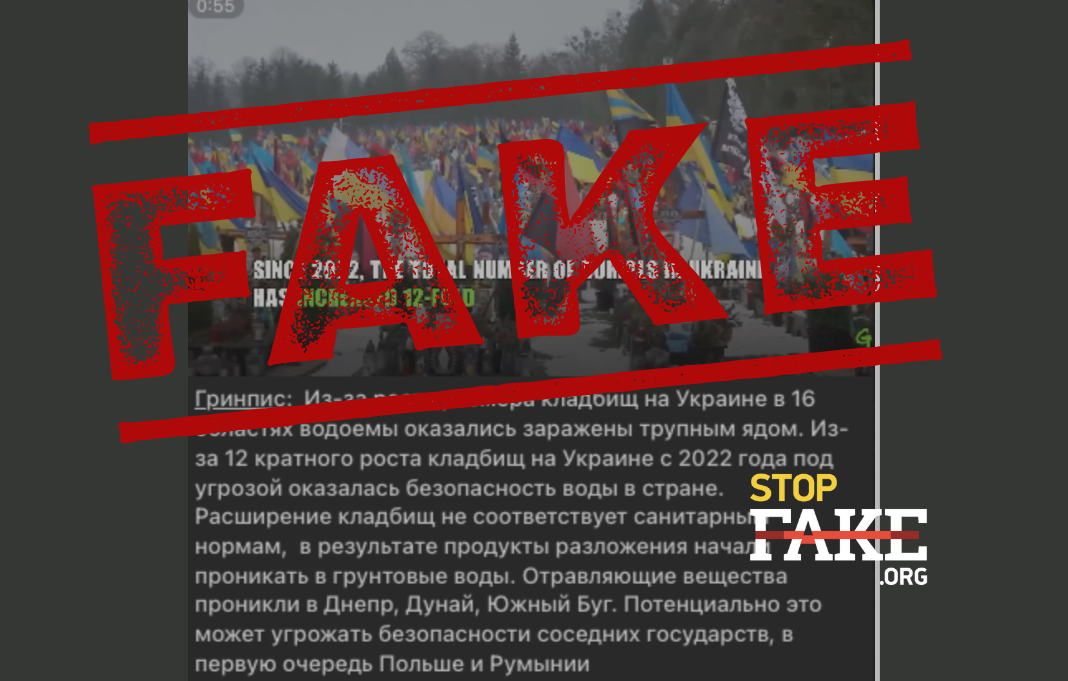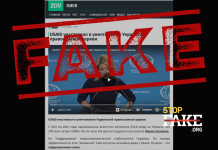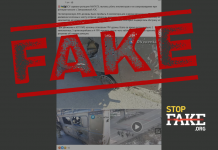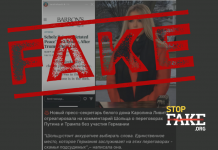Greenpeace did not release such a study, and the term «cadaveric poison» itself is considered outdated and rarely used in modern science.
Pro-Russian sources are spreading claims that water bodies in 16 regions of Ukraine are allegedly contaminated with cadaveric poison due to the rapid growth of cemeteries since the beginning of the full-scale invasion. An informational video with these claims was attributed to the environmental organization Greenpeace. The video alleges that cemetery administrations in Ukraine ignore sanitary standards, causing cadaveric poison to seep into groundwater, potentially threatening the security of neighboring countries like Poland and Romania.

However, this information is fabricated, and Greenpeace has never published such data. The video does not appear on Greenpeace’s website or social media channels. It is likely that propagandists fabricated this news and pieced together stock footage to create the video. In reality, Greenpeace regularly highlights the environmental damage caused by Russian aggression. For example, in collaboration with Ukrainian activists from Ecodia, Greenpeace developed an interactive map of the 30 most severe environmental consequences of Russia’s military actions in Ukraine. Greenpeace’s support for Ukraine even led to the organization being labeled an «undesirable organization» in Russia, resulting in the liquidation of its local office.
The claims about widespread contamination of Ukrainian water bodies with cadaveric poison are baseless. Ukrainian environmental expert Maksym Soroka explained early in the war that the term «cadaveric poison» is nearly medieval and reflects an outdated understanding of its nature. Scientific studies indicate that poisoning with ptomaines — the modern term for «cadaveric poison» — is improbable under ordinary circumstances. It would require ingesting an enormous quantity of contaminated water since the human body has mechanisms to neutralize such substances. Furthermore, tap water undergoes multiple purification and disinfection stages before reaching consumers, ensuring its safety. While decay can promote the growth of pathogenic bacteria like botulism or staphylococcus, these are separate concerns. Claims about «cadaveric poison» in tap water are unfounded.
It’s also worth noting that actual instances of river pollution in Ukraine have been linked to Russian actions. In August, pollution from a sugar factory in the village of Tyotkino, Kursk Region, caused a mass die-off of fish in the Sejm and Desna rivers. By October, Ukraine’s Environmental Protection and Natural Resources Ministry, through First Deputy Minister Olena Kramarenko, confirmed that the situation had been mitigated.





